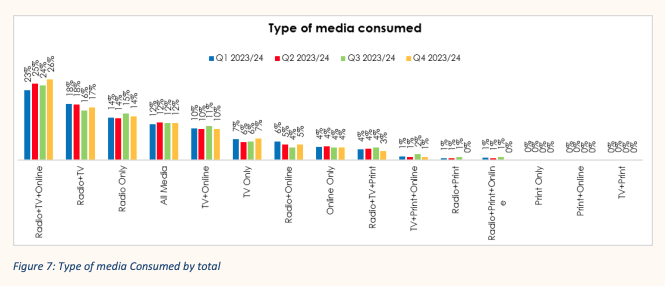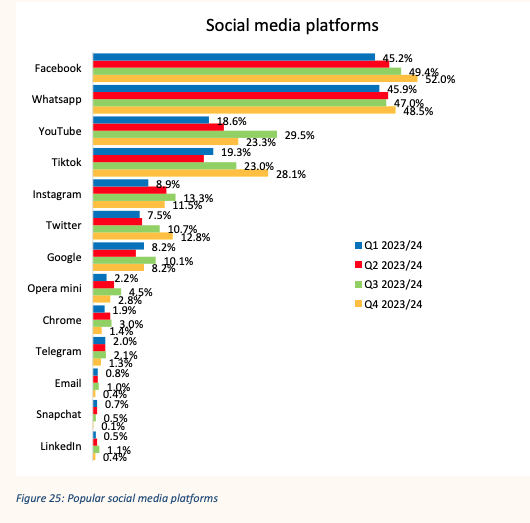Changing Media, Changing Youth, Never Dying Radio
- paul ekuru
- Aug 5, 2024
- 4 min read
By Pawlehouse Team

Kenya's media landscape is rapidly evolving, reflecting a broader global shift towards digitalization and changing consumer habits. The young population, in particular, is at the forefront of this transformation, utilizing a diverse array of media platforms to consume content and engage with information. Today’s Pawlehouse Pulse explores the current media consumption trends among Kenya's youth, focusing on broadcast, print, and social media.
Broadcast Media: Adapting to Digital Changes
Broadcast media in Kenya, which includes radio and television, continues to hold significant influence. However, the ways in which young people engage with these platforms are changing. According to a 2023 report by the Communications Authority of Kenya (CAK), radio remains a popular medium for many Kenyans due to its accessibility and affordability. Young audiences, though, are increasingly turning to digital radio services and online streaming options. For instance, stations like Capital FM and Radio Jambo have developed robust online presences, offering live streaming and on-demand content through their websites and apps. This digital shift allows young listeners to access content on-the-go, aligning with their mobile-centric lifestyles. Moreover, television networks such as NTV and KTN are leveraging platforms like YouTube and social media to reach younger audiences who prefer consuming video content online rather than through traditional broadcast.
Print Media: A Niche but Persistent Presence
Print media in Kenya is experiencing a decline in readership, a trend that mirrors global patterns. Despite this, newspapers and magazines still play a role, albeit a smaller one, in the media consumption habits of young people. Publications like The Standard and Daily Nation have been working to adapt by expanding their digital presence. They offer e-papers and engage with readers through social media channels.
Young Kenyans who do consume print media often do so for in-depth analysis and feature articles that are not readily available online. Additionally, niche magazines and local publications, such as the lifestyle magazines, are catering to specific interests and demographics, providing targeted content that appeals to the youth.
Social Media: Dominating the Digital Landscape
Social media is where Kenya's youth are most active, reshaping how information is disseminated and consumed. Platforms like Facebook, X, Instagram, TikTok, and WhatsApp dominate the media consumption landscape. According to a 2023 survey by GeoPoll, over 80% of Kenyan youths aged 18-34 engage daily with social media, with TikTok and Instagram being particularly popular for entertainment and personal expression.
TikTok, in particular, has gained immense traction, with young Kenyans using it for everything from creating viral dance challenges to sharing local culture and activism. Instagram is favored for its visual appeal, with many young people using it to follow celebrities, influencers, and brands. WhatsApp remains crucial for its role in group communication and information sharing, often serving as a primary channel for news and updates within social circles.
Social media has also become a platform for youth-driven movements and social commentary. For instance, the #KOT (Kenyans on Twitter) and now rebranded to KOX (Kenyans on X) phenomenon exemplifies how young Kenyans use X to discuss and influence national issues, from political debates to social justice campaigns. X Spaces for instance, have been and are currently being used by Kenyan youth to engage on national discourse. Some X Spaces have hosted in upwards of over 100, 000 listeners and speakers at a time. These platforms allow for rapid dissemination of information and active engagement in public discourse, showcasing the significant role social media plays in shaping modern Kenyan society.
The Pulse
So…
Is radio still a thing? Absolutely. Despite the rapidly evolving legacy media as we know it, radio in Kenya is not dead, neither is TV outdated. According to the (latest) 2024 Audience Measurement and Industry Trends Report by Communications Authority of Kenya, the leading media consumption trend has been the integration of multiple platforms throughout the year. This is to say that most Kenyans (not necessarily limited to the young population) are engaging with various media formats simultaneously.
Source: Communications Authority of Kenya; Audience Measurement and Industry Trends Report.
Is Tik Tok the leading social media platform? Absolutely not.
According to the same report, Facebook and WhatsApp lead the market share – one would obviously think Tik Tok is, going by its emerging popularity, but there are various reasons it’s not ahead of the pack yet.
Source: Communications Authority of Kenya; Audience Measurement and Industry Trends Report.
Conclusion
Kenya's young population is navigating a dynamic media landscape where traditional and digital platforms coexist, yet social media emerges as the dominant force. Broadcast media is adapting to digital trends, print media remains relevant in niche areas, and social media has become the central hub for engagement and information sharing. This shift reflects broader global trends while also highlighting the unique ways in which Kenyan youth are redefining media consumption.
As technology continues to evolve, so too will the media habits of Kenya's next generation. Yet, most importantly, is the much-needed adaption for the youth engagement approaches to accommodate true media integration; new media never relegated traditional media, it compliments it, and will continue to do so until trends tell us otherwise.
The Pawlehouse Company is a fully integrated media & communications collective, deploying powerful storytelling to shift mindsets and inspire action for lasting change. We focus on three core areas: Strategic Communications, Media and Youth Engagement.




